The Health Benefits of Sourdough Bread (Recipe: Whole Grain Sourdough Bread)
Written by Shannon of Nourishing Days
I wish you could smell this bread. It smells of handmade farm tables and loaves shaped by the hands of our ancestors. It is the kind of bread that you slather thick with butter and eat with soup when snow falls and winds howl.
This is sourdough bread – tangy and moist, dense and nutty. It is the bread made for centuries before the invention of commercial yeast packets.
For over two years we did not make or keep bread in our home for health reasons. Bread now graces our table once again, but without the ill effects we felt before. And it is all thanks to the wonder that is traditional sourdough bread and the many health benefits it contains.
Health Benefits of Sourdough
Sourdough breads are leavened by a starter that contain natural yeasts and acids. The airborne yeast creates the enzymes needed to eat up or predigest some of the toughest-on-your-belly parts of the grain. This action creates carbon dioxide, which gets trapped in tiny pockets of dough, resulting in a natural rising of the bread.
Breaks Down Gluten
The longer soaking/rising time breaks the proteins (gluten) down into amino acids, making it more easily digested. This is why some who have a gluten sensitivity can tolerate sourdough wheat breads.
Better Nutrient Profile
Like all other fermentation processes, the bacteria present in the sourdough starter eat the starch and sugars present in the grain. This results in a lowering of the starch or carbohydrate content of the bread, which is helpful for keeping blood sugar levels regulated. It also increases some of the vitamin and mineral content of the grain.
Naturally Preserves the Bread
The lactic acid in the bread creates a lovely tang and predigests the grain for you. The acetic acid produced in the souring process helps the bread to store longer, inhibiting the growth of molds.
Neutralizes Anti-Nutrients
Finally, the bacteria present in the sourdough help to activate phytase, an enzyme that breaks down an anti-nutrient present in all grains, beans, and seeds – phytic acid. This may seem minor, but phytic acid is known to strip your body of minerals and can be hard on your digestion.
None of this can be said of the quick action of commercial yeast.
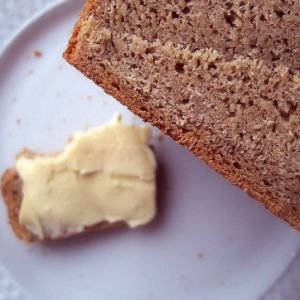
Ingredients
For the Starter:
- 1 cup wheat flour on day 1
- 1 cup freshly ground wheat flour on days 2-5
For the Sponge:
- 4 cups whole wheat flour
- 2 cups active sourdough starter
For the Bread:
- Sourdough Sponge from above
- 1/2 cup melted butter or coconut oil
- 1 Tablespoon sea salt
- 5-6 cups whole wheat flour or as needed for kneading
Instructions
For the Starter:
- You can do this in one of three ways. The first is to obtain an established starter from a friend, feed it, and use it for baking. Another method is to purchase a dehydrated starter from a culture starter company and follow the directions for rehydrating, feeding, and baking with the starter.
- If you're more of a do-it-yourselfer like me, then you may want to make your own. Honestly, you won't believe how easy this is. All you need is flour, water, a half-gallon jar, and a wooden spoon. Here's how I do it:
- Day 1: Combine 1 cup wheat flour with 3/4 cup warm water. Cover with towel or coffee filter and secure with rubber band or canning ring. Place in a warm place.
- Day 2: Add 1 cup freshly ground wheat flour and 3/4 cup warm water. Ditto above.
- Days 3-5: Repeat.
- The time it takes the starter to become active will probably depend on what yeast beasts you have hanging around in your home. To maintain your starter simply feed it every day and keep in a warm place, or refrigerate and feed just once per week. I also like to pour the starter into a bowl once a week and beat some air into it with a wooden spoon.
Make Your Sponge The Night Before:
- I have found that giving the yeast time to activate without added ingredients results in a better bread. For this step you will need a large, non-reactive bowl, a wooden spoon, and the following ingredients:
- Combine all ingredients with 3.5 cups warm water and beat well to incorporate air. It should be the consistency of pancake batter. Cover with a damp towel and place in a warm place, like next to a heater or in a warm oven.
Prepare Dough to Rise & Bake:
- In the morning, get out your starter which should look active with bubbles and a bit of rising action. Give it a good stir and then remove 1 cup to set aside for your next batch of bread. To this you will add:
- Add the butter/coconut oil to starter and fold in along with sea salt. Now add the flour one cup at a time, while mixing, until the dough pulls away from the sides of the bowl, but is still a little sticky. Remove dough and place on a well-floured surface. Now knead the dough for about 10 minutes or until smooth, adding more flour to work surface as needed.
- Butter two bread pans and set aside. Now cut your dough in half and form two loaves. Place loaves in bread pans, give them a few diagonal slits with a sharp knife, cover with a damp towel (tea towel, not terrycloth), and place in a warm spot. This time of year I place them inside of my oven and turn it on warm every time I walk past.
- At this point you wait until the loaves have risen past the top of the pan. Depending on how active your starter is this could take a couple hours or you may be baking bread around dinner time. This is something you have to make peace with when you bake with sourdough bread.
- Once the loaves have risen to your liking you will bake them in a 350 degree oven for 45 minutes to an hour, or until the bottom of the loaf sounds hollow when you thump it. Remove loaves from pans and place on a cooling rack to cool completely before slicing.
Nutrition
There are many different ways to make sourdough bread, and I encourage you to experiment. That is the beauty of sourdough – besides it’s health benefits, it is also extremely versatile.
Have you made sourdough bread? Will you, now that you know of the benefits?


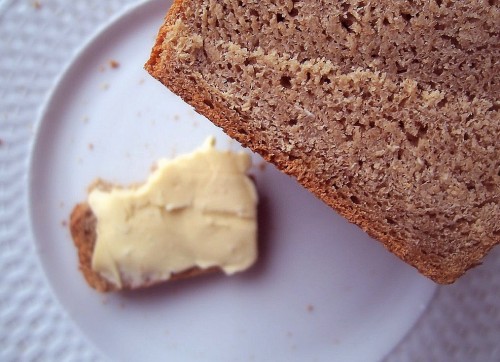


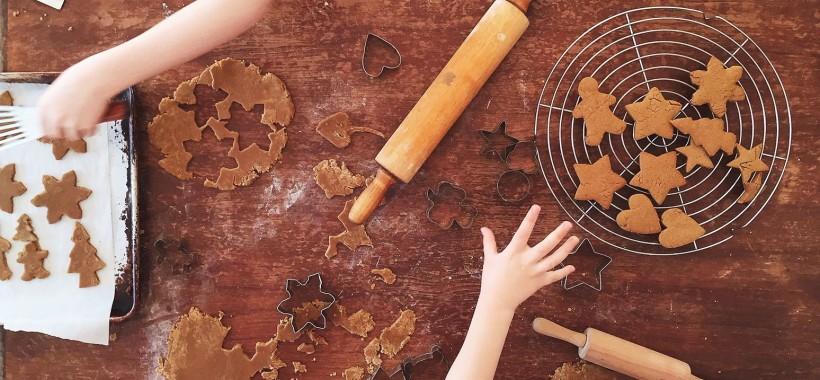
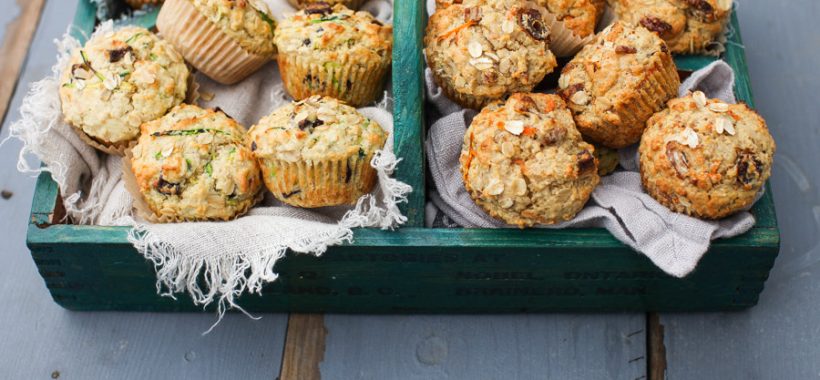
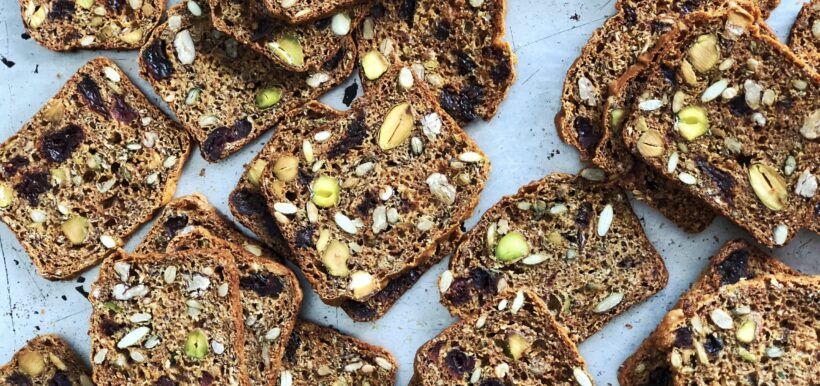


i have been enjoying all the information and comments. I have never made sourdough at home but i must learn as I am opening a bakery in my hometown. My business partner owns a restaurant and when we open I will be supplying him with his bread. I am feeling a little overwhelmed and stressed about this.. I have baked bread for years at home for my family using commercial yeasts but i am determined now to learn the healthier way. Once i master this technique my question is how do i make it in bakery sized batches?
Hello, I wanted to ask if you happen to have heard of anyone using unsweetened pineapple or orange juice for the first few days to prevent unwanted microscopic things from growing and allowing the good things to get a good start? I had two attempts at making a SD starter. The first one called for mixing 1/4 C warm water with 3/8 C whole wheat flour twice a day. By about the third day the odor of the starter was pretty foul. I began to read online and found an article that stated that if you have a strong odor that possibly some unwanted microbes have began to grow and could imitate the effects of yeast. I tossed it and began the next recipe. This one called for using the juice to create an acidic environment for the correct things to grow. It was 2 T of whole wheat flour and 2T of either unsweetened pineapple juice or orance juice (I used some Tropicana orange juice from a bottle) daily for three days. To cover with loose plastic wrap after each feeding. On day three it called for you to remove half of the volume and continue the cycle but now with water instead of juice. It’s day three and there’s no sign of any bubbles as mentioned in the recipe, but the odor is similar to an early developed wine. Being new to the game of breadmaking can you offer some pointers if the juice is to be used or would you just stick to the flour and water if this is a safe method? Thanks for your time.
(BTW, I just tossed the last mixture that I had in my jar and will restart with the method you suggest. Thanks.)
My favorite fermentation is raisins. I’ve used limes, apples w blueberries etc. I ended up combining all 3 experiments. My sourdough starter is equal potions of flour and my fermented fruit and limes. I strained the fruit out. Put two cups aside for the sourdough starter. This gives the bread the “sour tang” that I live about sourdough. I’ve tried just water and flour….that’s not the sourdough I like. Cooking is all about individual tastes and being able to repeat the process. Become a mad scientist and CREATE the bread you love
Should the half gallon jar (for the starter) be glass?
Glass or plastic is fine just don’t screw the lid on tight.
I am confused about the sponge. When you say “In the morning, get out your starter which should look active with bubbles and a bit of rising action”, are you actually referring to the sponge you’ve just made? Not the original starter?
What you set aside for the bread.
Still confused! I just made my sponge with the 2c starter. …but I actually have 2 cups of starter left – (one to give away perhaps and one I suppose that I can start again. Should there be 2 c left after you make the sponge the night before? Please clear up once again for me. Thks.
And one more thing – should it be fed with 1 cup flour and 3/4 water each? thks
One more thing should each cup of starter be fed with 1 c flour and 3/4 c water today? Thks
Looks like I made my sponge a day early ( I would have had 5 c of starter :-)) Hope I don’t run into more problems baking it a day early!!! Pardon me all, forget I posted!!!
My husband and I are gluten-intolerant. I have been buying sourdough bread, but recently started making it. I’ve been doing on-line searches regarding sourdough bread. So far, Your point by point breakdown of the process and steps is the easiest to follow and understand. Thank you!
Most excited to try this!
I have Bob’s Red Mill Stone Ground Whole Wheat Flour and also their Whole Grain Buckwheat Flour. Would they be able to be mixed half and half or should I just stick to the Stone Ground Whole Wheat?
Thanks!
Cara
Great recipe! I cut it in half for one loaf, even removing 1/2 cup starter for next time, but my dough rose too much and the side fell off in the oven. Fortunately I caught it before it went to the bottom.
I used an 8″ glass pan. What did you use?
There is something about sourdough bread that I just LOVE. Have you ever heard about Sourdough International’s sourdough starter? I have a friend who bakes and she uses their starters but I kind of wanted some more reviews..
hello, just need to clarify, to make sponge I used two cups of starter. Then you instruct to set aside 1 cup of sponge/starter for next bread. Do I add this cup to my existing starter that I still have left that is just minus the two cups?
thanks
Thanks for sharing your ideas. I love this recipe with whole wheat.
“This time of year I place them inside of my oven and turn it on warm every time I walk past.”
I do follow the same trick.
My starter doubled with full bubbles on the first day itself 🙂 I ‘m little scared & kept that inside my fridge & started my second batch with same trick & im in day 3 going good. This time not much bubble.
Can you tell me how many days did it take for you to get the complete starter .
Thanks
Sis
When you say “wheat flour” for making the starter, are you referring to whole grain wheat flour or just any wheat flour? I have been making sourdough with a starter that was 100% whole wheat, but found the flavor very strong (and my kids wouldn’t eat it, even though they are used to 100% whole grain breads only), so I thought I would try using a starter with refined flour but the rest of my bread with whole wheat.
Any idea the calorie content? I’m looking for low calorie foods to replace store bought ones (like my 45 calorie bread from sara lee)
I wish I could smell it, too. I can’t wait to try out myself.
Yes, I started making sourdough bread around 9 months ago. I’ve become obsessed and I can’t stop 🙂
The bacteria doesn’t take away carbohydrates from the bread– they’re still there. They simply predigest them in order to make the more easily digestible for humans.
Phytic acid doesn’t strip your body of nutrients. It can prevent nutrients from getting absorbed by your body, but it doesn’t take them away. Phytic acid doesn’t make you lose anything but it may prevent you from gaining some nutrition. This relates to your nutrition comment about how the bacteria “increases some of the vitamin and mineral content.” The nutrients were already there, they simply aren’t always bioavailable.
Have you tried using only wheat and water for your bread? It’ll lower the fat content 🙂
do I really need a starter in order to succeed in making sourdough bread ? why not leave the dough in room temp for 48 hours and add acid stuff like apple cider vinegar instead the acidity of the starter ,as well place some yeast nearby the tray ,in order to dough do its job by its own of collecting the candida “
I have a starter that has been going for over 50 years. Our kids also have some of this starter, so I know where to get another should I ever lose mine. One successful experiment I tried was drying it to send through the mail. I spread some on a sheet of wax paper on a cookie sheet. When it was dry enough, I moved it to a wire rack to finish drying. When it was thoroughly dry, I ground it to a powder in the blender and mailed it. Then the powder could be added to the flour and water a day or two before using, and the sourdough starter worked great.
I am confused! Others have already asked the questions but I see that you don’t respond…or at least not so others can see your responses.. I have made sourdough bread with my own starter for years but have never made a sponge before. Perhaps you could clarify your recipe instructions. I do enjoy many of your recipes so thank you for your hard work.
Sorry but your instructions are way too broad… ” ditto above,” “Days 3-5: Repeat?” They are absolutely no help for the novice bread maker trying to learn how to make sourdough for the first time. It’s useless to me.
It makes me not want to subscribe to your blog for any of your other diy’s. Canning 101… no thanks.
The best way I’ve seen of making the starter culture is to start with real yoghurt – milk fermented by Lactobacillus. You start with the most acidic yoghurt you can find, since that acidic action provides the greatest health benefit, especially for women. Mix equal amounts of yoghurt, water & flour, then feed daily with the same water & flour for one week. It will start bubbling & foaming (& overflowing!) and is ready to use. Use 3/4 of it, adding flour to make a dough.